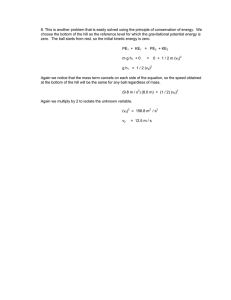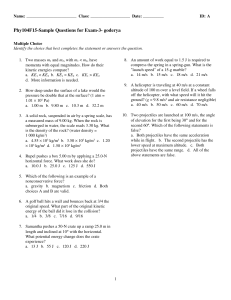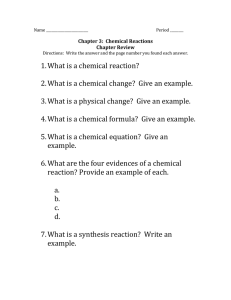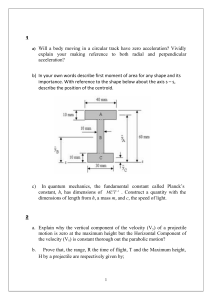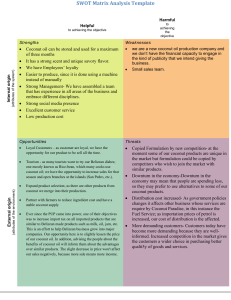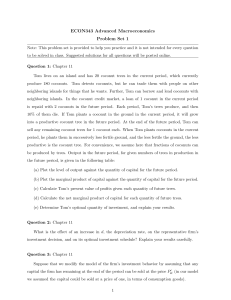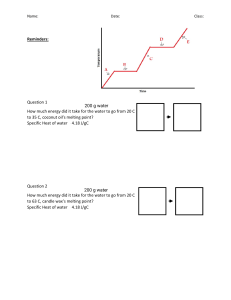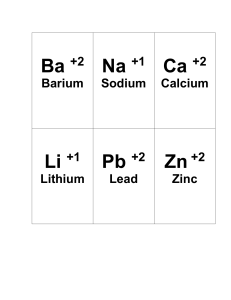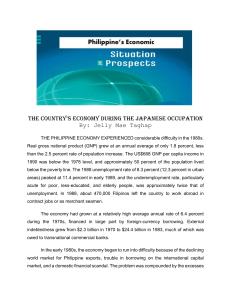6. This problem is most easily solved using the principle of
advertisement
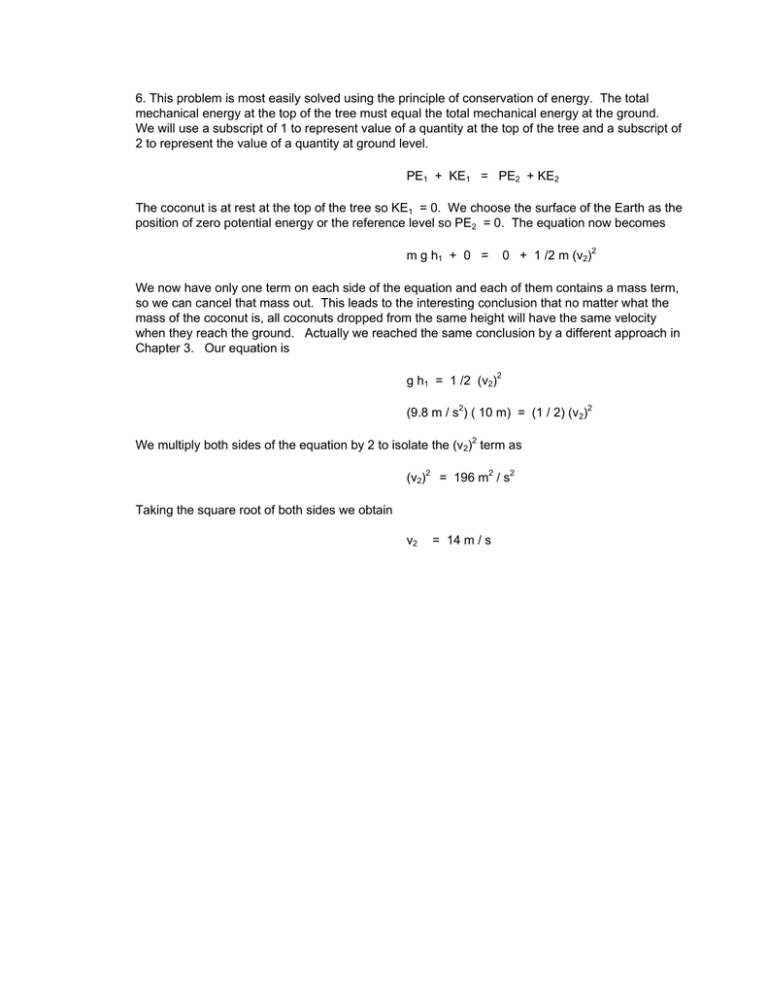
6. This problem is most easily solved using the principle of conservation of energy. The total mechanical energy at the top of the tree must equal the total mechanical energy at the ground. We will use a subscript of 1 to represent value of a quantity at the top of the tree and a subscript of 2 to represent the value of a quantity at ground level. PE1 + KE1 = PE2 + KE2 The coconut is at rest at the top of the tree so KE1 = 0. We choose the surface of the Earth as the position of zero potential energy or the reference level so PE2 = 0. The equation now becomes m g h1 + 0 = 0 + 1 /2 m (v2)2 We now have only one term on each side of the equation and each of them contains a mass term, so we can cancel that mass out. This leads to the interesting conclusion that no matter what the mass of the coconut is, all coconuts dropped from the same height will have the same velocity when they reach the ground. Actually we reached the same conclusion by a different approach in Chapter 3. Our equation is g h1 = 1 /2 (v2)2 (9.8 m / s2) ( 10 m) = (1 / 2) (v2)2 We multiply both sides of the equation by 2 to isolate the (v2)2 term as (v2)2 = 196 m2 / s2 Taking the square root of both sides we obtain v2 = 14 m / s
